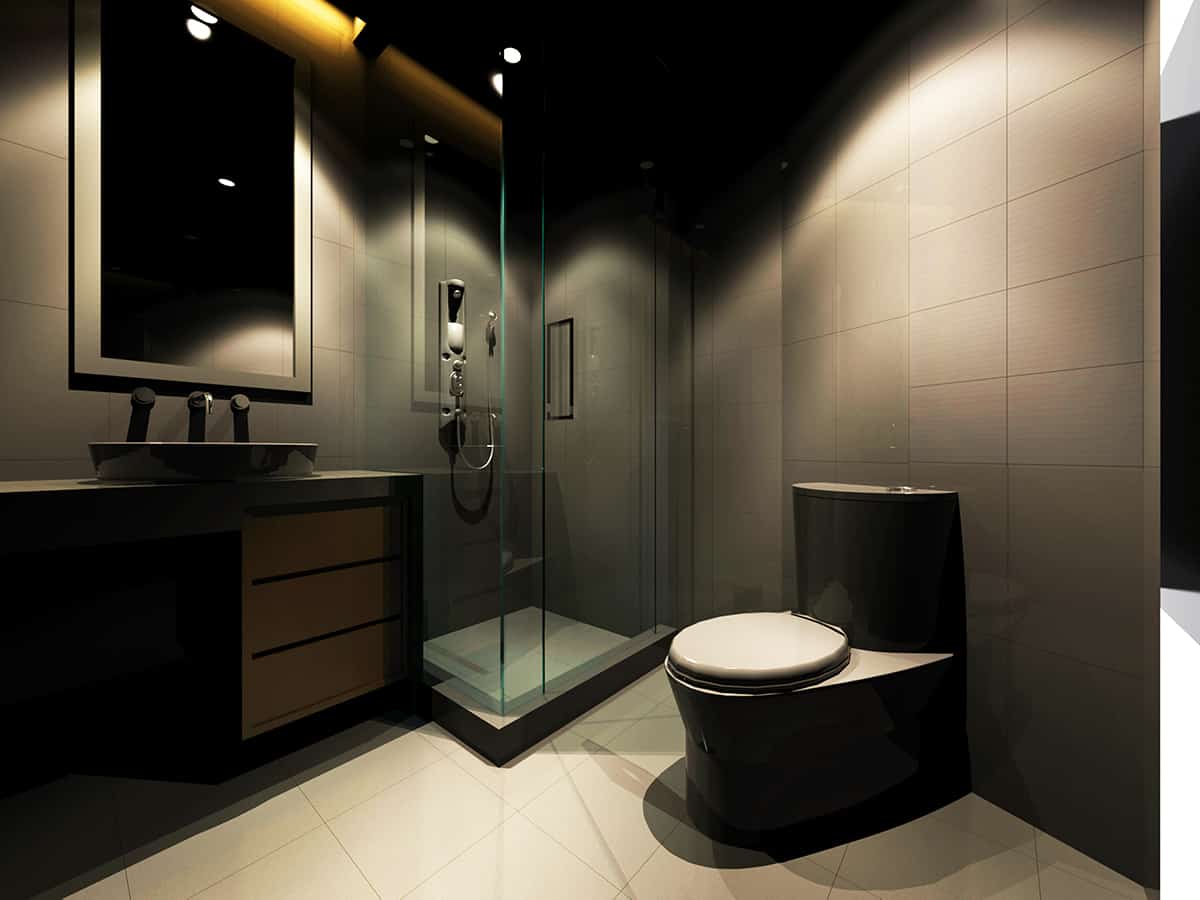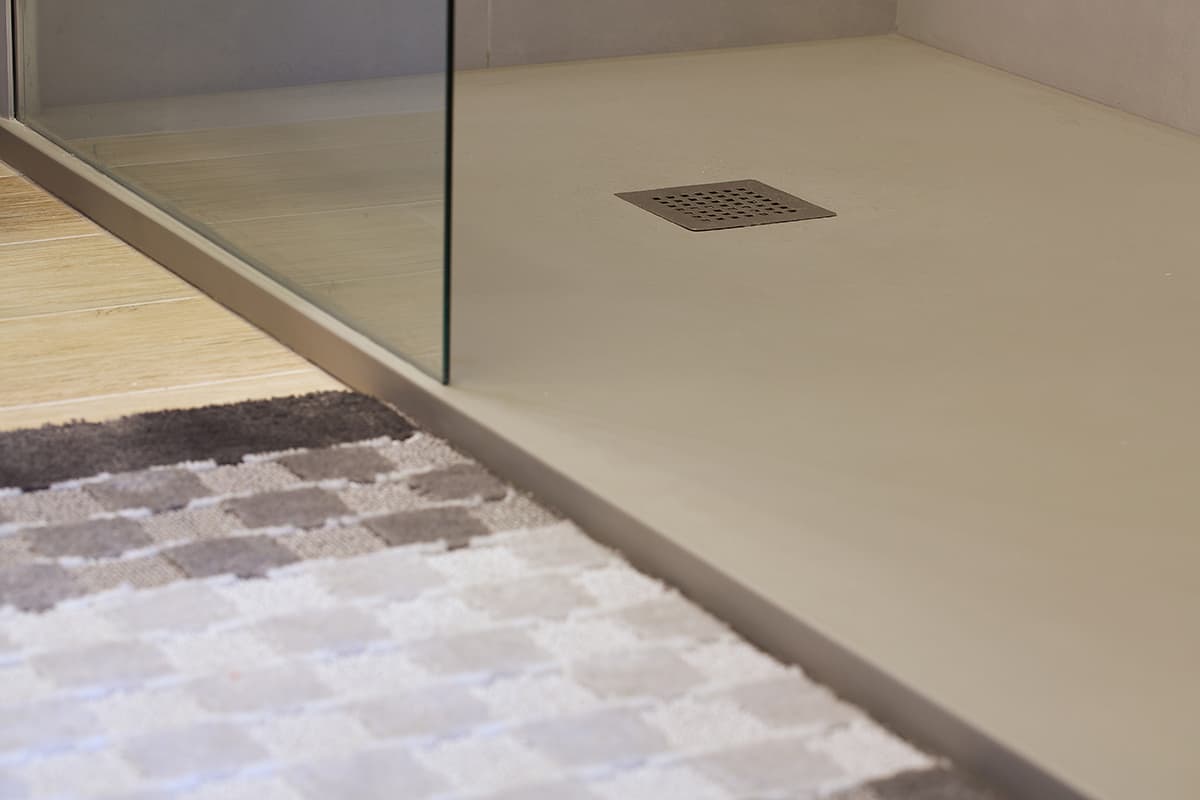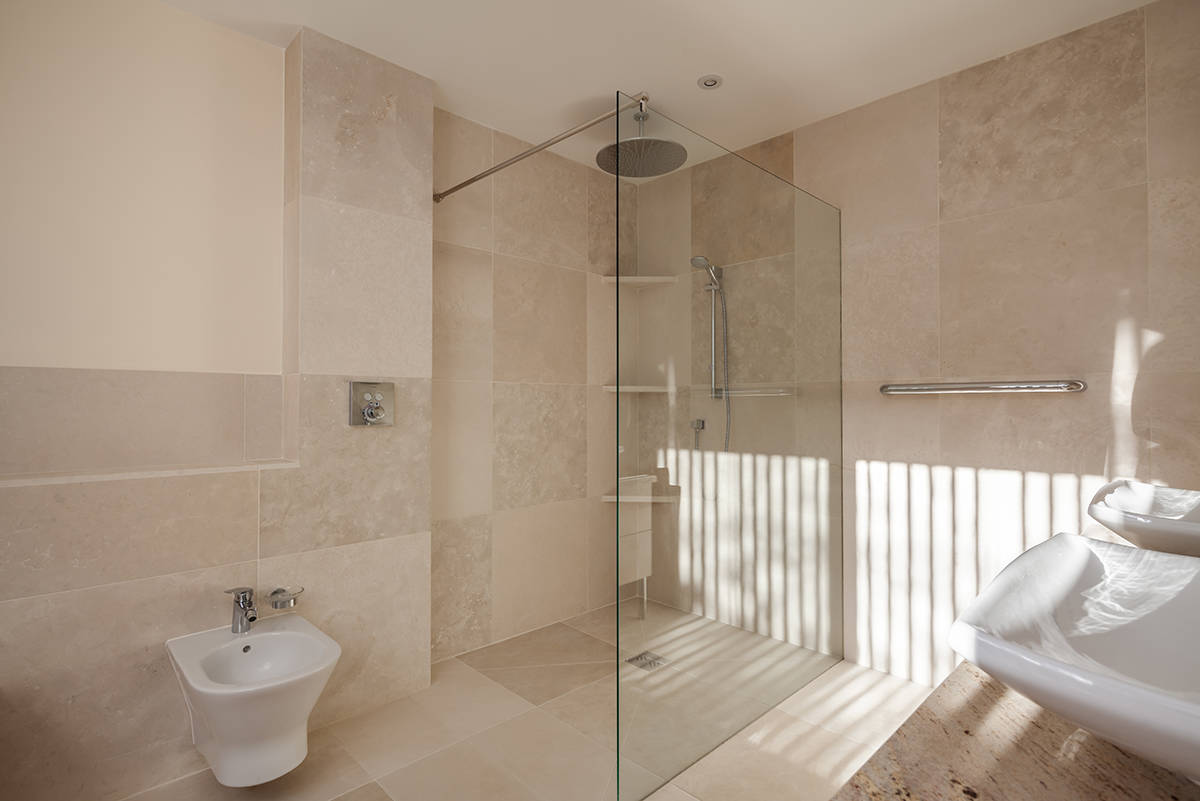If you’re renovating a bathroom then one of the decisions you’ll have to make is choosing between a shower pan and a tile floor for your shower. Both of these options offer a range of advantages and disadvantages, and understanding these can help you to determine which shower floor surface is going to be best for your family and for your home.
Here we explore the factors you’ll need to consider when deciding between these two popular types of shower floor surfaces.
Table of Contents
What is a Shower Pan?
A shower pan is a type of waterproof tray that forms the base of a shower enclosure. Shower pans are durable and waterproof, guiding water toward the drainage system and preventing water damage from leaking onto the floor beneath.
Shower pans are a critical component of any shower installation, and they come in various shapes, sizes, and materials to accommodate different design preferences and functional requirements. A shower pan is a single pre-fabricated item, as opposed to tile floors that are made up of multiple individual tiles.
Shower Pan Advantages
Low Maintenance
Shower pans are made from a smooth material that is easy to keep clean. They should routinely be sprayed with a cleaning product and wiped clean, and the non-porous surface of shower pans means this is an easy process. Unlike tiled shower floors, shower pans do not feature any grout lines where dirt or mold can build up, which makes them considerably lower maintenance.
Accessible
Shower pans come in slim-line varieties with low thresholds, which can make them much easier to use for people with limited mobility.
Waterproof
Shower pans are made from one solid piece of waterproof material, as opposed to tile floors which are designed with grout in between each tile. Shower pans are much less likely to encounter problems with waterproofing, and they are specifically designed to guide water toward the drain, which helps prevent leaks and potential water damage.
Easy Installation
Installing a shower pan is generally easier and faster than laying a tile floor in the shower, making it a better option for any DIY enthusiasts renovating their own home bathrooms. The shorter installation time can also reduce labor costs, and mean a bathroom renovation can be completed more quickly.
If you’re employing a contractor to change your shower floor, it’s likely that a shower pan will cost less to install because of the ease of fitting compared with tiles.
Durable
Shower pans are designed to withstand daily use, so they represent a good long-term option for your shower base. They offer good durability and won’t crack under normal pressure.
Cost-Effective
If you’re renovating your shower on a budget, a shower pan will usually represent a considerable saving compared with tile floors. Shower pans are typically less expensive to buy, and less expensive to install.
Good Drainage
Shower pans are designed with a built-in slope that is angled toward the drain, which encourages consistent drainage. This helps to minimize the likelihood of standing water and reduce the chance of water damage to your bathroom.
Shower Pan Disadvantages
Limited Style Options
Shower pans come in standard shapes and sizes, and there isn’t a lot of variety within this, so if you’re looking for a unique or unusual design then a tile floor will represent a better option. Shower pans are predominantly white, though other colors can be found from specialist suppliers online, but these typically come at a premium.
Basic Appearance
If you’re looking for luxury, shower pans may not be the best option. They tend to look more basic compared with tile shower floors, which can give a more high-end appearance.
Not Repairable
If a shower pan suffers from a breakage or a crack, you’re going to need to replace the entire thing. Comparatively, if a tile sustains any damage, you can replace the individual tile rather than having to entirely retile the whole shower floor.
What is a Tile Shower Floor?
Tiled shower floors represent an alternative to shower pans. These are made from tiles that are arranged and fixed to a subfloor, as opposed to a shower pan, which is formed from a single, pre-fabricated piece of material. Tile shower floors offer a greater range of choices to homeowners since they are available in a wide choice of materials, colors, shapes, and sizes.
Tile Shower Floor Advantages
Style Options
Shower tile floors offer seemingly endless design options, making them an excellent choice if you want to create a specific look. Shower tiles come in a huge range of colors, materials, patterns, sizes, and styles, so they’re better suited to achieving a custom look in a bathroom. You can easily find tiles that will accentuate your color scheme and decor or make more of a style impact compared to shower pans, which come in very few styles.
Luxurious Look
If you want to achieve a luxury aesthetic in your bathroom then a tile shower floor is undoubtedly a better option than a shower pan. While shower pans offer quite a simple and basic look, high-quality tiles such as marble tiles will ultimately achieve a more elegant and upscale appearance.
Durable
Tiled shower floors and shower pans both offer excellent durability under normal use. The durability of tiles can vary depending on the type of tile you have chosen, but when installed correctly and appropriately maintained, tiled shower floors are very strong and sturdy.
Can be Repaired
If a tile on your shower floor surface suffers from damage, you can replace the individual tile rather than replace the whole floor. This means that repairs will typically be more cost-effective and less disruptive compared with shower pans, which would need to be replaced in their entirety if they sustain any damage.
Heat Resistant
If you have a heated bathroom floor then tiles will work best as a flooring surface. Most tile materials, including porcelain and ceramic, are resistant to heat, and therefore they create a more pleasant experience underfoot.
Design Flexibility
Tiles can be arranged in intricate patterns and layouts, allowing you to create unique designs and focal points within your shower area. Using tiles you can completely personalize your shower floor, for example using mosaic tiles to create your initials, or by mixing and matching tile colors.
Tile Shower Floor Disadvantages
High Maintenance
Tile floors in showers are typically more work to care for compared with shower pans. This is due to the grout lines in between tiles, which can accumulate a build-up of dirt, soap scum, and mold over time. To prevent dirty grout lines you will need to routinely scrub the grout with a cleaning product, and seal them when necessary.
Complex Installation
If you want a tiled shower floor then you will likely need to hire a professional, because tiling is a skill that is developed with time and experience. Laying tiles is not as easy as it looks, and if you attempt to install the tiles yourself without proper guidance, then you may open yourself up to future issues with water damage. Tile installation can be more complex and time-consuming compared to installing a pre-fabricated shower pan, which means that it isn’t the best option for DIY installers, and it also means that you can expect to pay more for a professional to tile a bathroom.
Slippery
Some tile materials can become slippery when wet, increasing the risk of accidents. When selecting tiles for a shower floor, opt for slightly textured tiles that aren’t going to present a safety hazard.


